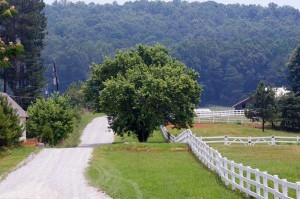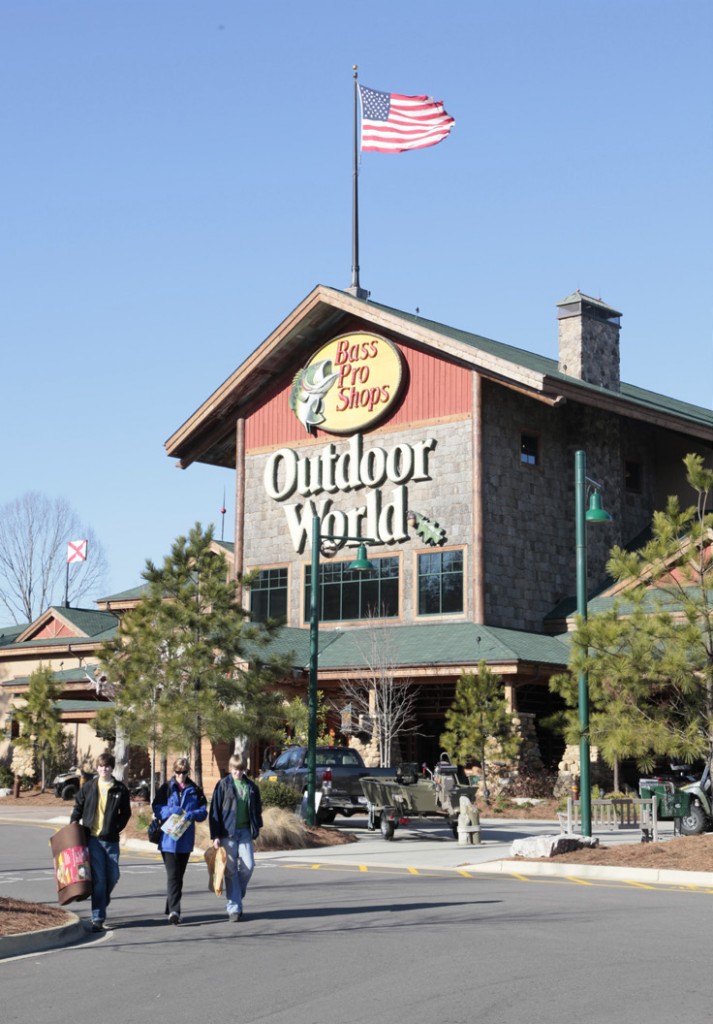 Alabama’s Stagecoach Route Through Leeds began as an Indian trail traversing a vast watershed. As a trail, it served as a staging ground for three emerging Alabama cultures. Early Christian Cherokees along with European circuit riders used it to plant Methodist churches. The Christian Indian culture arrived from North Carolina before 1812. Andrew Jackson’s scouts (1812-13) widened the trail as they sought roadways for supply wagons. When Europeans, largely veterans of the Creek Indian War, entered the valley in Leeds (1820), the widened trail became a stagecoach route that lay in its original bed when the first black settlers arrived in the late 1880’s. Studies by John Garst place the legendary John Henry in Leeds at the Oak Tunnel of the C&W Railroad in the 1880’s, and descendants of original Black-American settlers concur with Garst’s conclusion–the Leeds, Alabama, claim that Henry was a real person and that he performed his famous contest with the steam drill in Leeds.
Alabama’s Stagecoach Route Through Leeds began as an Indian trail traversing a vast watershed. As a trail, it served as a staging ground for three emerging Alabama cultures. Early Christian Cherokees along with European circuit riders used it to plant Methodist churches. The Christian Indian culture arrived from North Carolina before 1812. Andrew Jackson’s scouts (1812-13) widened the trail as they sought roadways for supply wagons. When Europeans, largely veterans of the Creek Indian War, entered the valley in Leeds (1820), the widened trail became a stagecoach route that lay in its original bed when the first black settlers arrived in the late 1880’s. Studies by John Garst place the legendary John Henry in Leeds at the Oak Tunnel of the C&W Railroad in the 1880’s, and descendants of original Black-American settlers concur with Garst’s conclusion–the Leeds, Alabama, claim that Henry was a real person and that he performed his famous contest with the steam drill in Leeds.
Local folklore holds these claims as fact. Subsequent to these early events, the Stagecoach Route in Leeds has changed little and still bears the landmarks of these early cultures. The Leeds Historical Society marked the stagecoach route through Leeds in 1998. St. Clair County continued the marking in 2000 when it traced the “Ashville to Montevallo” road to the Etowah County line. More than twenty-two markers in Leeds document this history, alone. Additionally, Leeds Historical Society has documented the authenticity of old homes, businesses, churches and cemeteries appearing on the stagecoach route. National, state, or local recognition has been sought and received for thirty sites, and each property bears an appropriate marker. The Historical Society opens Rowan House Stagecoach Stop to the public by appointment. Further, 119 from I-65 through Leeds has been named for three Leeds residents who received Medal of Honor recognition. The name, Erwin, Lawley & McLaughlin Medal of Honor Highway, was designated by the Alabama State Legislature. Signs on the bridges of 119/411 in Leeds mark the Little Cahaba River. Because this river is uniquely beautiful and also entwined with early Alabama history, the Leeds Historical Society received this recognition from the Alabama Department of Transportation.The scenic byway, including the entry through Shelby County, travels north for approximately eighteen miles through a valley of unique archival treasures and historic sites that exist in a setting of natural beauty that has been largely untouched by developers. Among these treasures are American Indian archives, horse farms, and historic homes, businesses, churches and cemeteries. Much of the property on each side of the road has been owned and maintained by the same families for generations.
Today, nature enthusiasts can enjoy Leeds’ scenic setting. From Lake Purdy to Leeds/Moody 411, bicycling, canoeing, horseback riding, nature photography, and fishing abound at copious sites of opportunity for recreation. Canoe launches, and boat landings are available near lake Purdy. Canoes, flatboats, and small houseboats can be rented. Local horse farms allow horseback riding for those who make prior arrangements. Bank-side fishing is free along the way to Leeds. Leeds parks offer picnic sites on the Little Cahaba River where monuments, flags, and interpretive exhibits tell some of the local stories. More exhibits are planned; Bass House at the edge of the park is a middle-class antebellum home that is to become a local history museum.
Leeds was first incorporated in 1887. The vintage downtown district (turn-of-the-twentieth-century) is decorated with hanging baskets trailing their flowers in the breeze from May through November. Flowers in downtown street planters display the hues of each season. Two small gazebos and benches lend a relaxed quality to the old town.
Tourists can stop for an old-town lunch at the Wild Berry Tea Room or world class cuisine at Augie’s, in a building where Elvis Presley once dined. Shoppers can browse for unique gifts at Monkey’s Uncle or visit several of the European antique shops and old world outlets — to mention only a few of the one-of-a-kind shops in old-town Leeds. The cement plant in old-town Leeds operates one of the last office buildings designed by the highly acclaimed industrial architects of the 1930s. Businesses are buying old factories and converting them into unique shopping sites or, in the case of ATROX Charities, entertainment.



